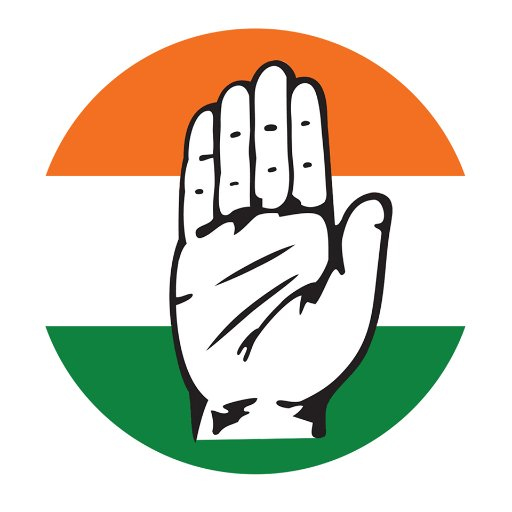A case of phantom voters

- Pawan Khera
On August 7, Shri Rahul Gandhi addressed a press conference about the‘vote chori’ executed in the Mahadevapura assembly segment of Bangalore Central Lok Sabha constituency. The evidence is based on an independent investigation by the Congress Party’s research team which revealed that in this assembly segment, there were 1,00,250 fake voters. Given the magnitude of this fraud, it is hard to dismiss it as “clerical error”. It hints at a deliberate and systematic manipulation of the voter’s list. In Mahadevapura, thousands of voters are registered at house number “zero”. Octogenarians are registered as “first-time voters” on rolls meant for 18-year-olds. Phantom residents of breweries and commercial spaces are enrolled en masse. Thousands of electors had blurred/missing/too-tiny-to-identify photos on voter rolls. Thousands of others are registered to vote at multiple booths, sometimes across states, and they also vote more than once.
This has raised critical questions about the credibility of the ECI, the sanctity of the electoral process, and the legitimacy of elected representatives across India. If the referee is not neutral, there is no sport. If the Election Commission is not impartial, there is no democracy. And if there is no democracy, there is no India as we claim to know it. The question that haunts the Indian public is: If it happened in Bangalore Central, what’s the guarantee it didn’t happen everywhere?
The scope of this scam is impossible to assess, given the limited resources. The only way to audit the electoral rolls of the entire country is to automate the process. In order to be able to do so, we would need digital/machine-readable electoral rolls of all the constituencies. Then, an unbiased, apolitical computer programme can analyse the electoral rolls — constituency after constituency — to produce an indisputable report card on their accuracy. If proven correct, it will immensely enhance the credibility of the ECI and the BJP, which happens to be in power at the centre and in the majority of the states/ UTs.
The ECI and the ruling party should welcome this idea. Why? Because any democratic institution that trusts its functioning and processes should not feel threatened by scrutiny. Yet, the ECI has left no stone unturned to make independent scrutiny difficult. It proposes to destroy CCTV footage from polling booths — the very evidence that could confirm or disprove these allegations. It has categorically refused to release digital electoral rolls. What they have given us instead are multiple 7 ft tall stacks of paper rolls for one assembly seat.
We could still have extracted the data through Optical Character Recognition (OCR), a technology that recognises text within a digital image and would make it considerably easier for us to digitise the paper rolls supplied by the ECI. But the ECI provides non-machine-readable rolls that are immune to OCR.
Consequently, our team, which was earlier determined to analyse the electoral rolls of multiple constituencies, was forced to sift through the electoral rolls of just one assembly segment in one Lok Sabha seat because it had to be done manually, a process that took six months and thousands of man-hours. This seat, we found, had one lakh fake votes.
When the results of a people’s election are treated as proprietary property, we are no longer talking about open competition. We are talking about a scoreboard hidden from the very citizens who make the game possible.
Instead of engaging with hard evidence, the ECI is resorting to half-baked reactions. It first sought that Rahul Gandhi submit documentary proof of all 1,00,250 fake votes, under oath. Even the ECI is certainly unsure about the rule under which this oath has been demanded. Nevertheless, the BJP had hoped that it would use this oath as a smokescreen to launch a mudslinging operation against Rahul Gandhi. Many BJP functionaries, media personnel and influencers jumped in. Some sought to discredit the evidence-backed investigation by peddling disinformation and misinformation, and still others dismissed the prospect of any independent investigations into the functioning of the ECI.
Much to the BJP’s horror, however, this exercise is no longer confined to Congress alone. Concerned citizens, journalists, digital influencers, domain experts, and members of civil society have voluntarily stepped in. They are independently examining electoral data, cross-checking official records, and publicly challenging the BJP’s narrative — essentially turning this from a party investigation into a people’s investigation.
A striking example came on August 8. BJP IT Cell head Amit Malviya posted photos on X of three voters of a family holding their EPIC cards. Rahul Gandhi had spoken about this family in his press conference as being among thousands of voters on the Mahadevapura rolls who had indistinguishable photos, and hence were likely to be bogus voters. Malviya’s point was that these voters did indeed exist in real life.
But his attempt backfired. Independent users on social media quickly noticed that the EPIC numbers on the cards in Malviya’s photos did not match the EPIC numbers on the electoral rolls for people with the same details, leaving Malviya red-faced. But more importantly, the attempt only incriminated the ECI further.
This is what the BJP has always feared — an informed citizenry that is empowered to think independently and ask questions. Guardianship of democracy must extend beyond Parliament — to courts willing to interrogate procedure, technologists capable of exposing manipulation, media that are still committed to truth-telling, and citizens who know that without verifiability, the vote is theatre. That is the invitation now — not to save democracy, but to reinvent it. To demand digital/machine-readable voter data. To insist on CCTV preservation and procedural audits. To refuse to let the vote be stolen in silence.
Because this is no longer about one party, one election, or one seat. It is about every Indian’s right to vote.
The writer is chairman, AICC’s media and publicity department.
Courtesy: The Indian Express







